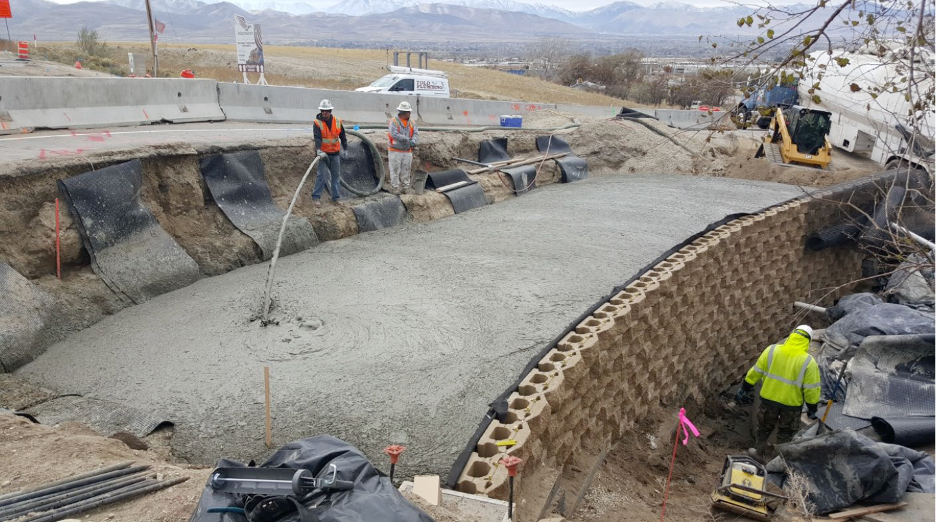UDOT Projects
- Category
- Precast Panels with LCC
About The Project
SR-154 at Redwood Road Interchange
Initiated in 2014, this design-build construction project took place at a grade-separated interchange. This helped to improve the efficiency of the Bangerter Highway and Redwood Road corridors by helping reduce the traffic volume and delays at this intersection.
The Solution
For this job, fill heights reached up to 25 feet and the lengths of the walls were up to about 500 feet. This project’s main purpose was to reduce load/vertical effective stresses below the yield stress at depth in fine-grained layer(s). Sites were over-excavated, and Cell-Crete replaced the native deposits with lightweight cellular concrete (LCC) below mechanically stabilized earth (MSE) walls. As a result, the construction schedule was accelerated and long-term settlements were reduced. The design approach for this project included treating LCC as an embankment material and the structure needed to be designed as a traditional/typical length of MSE wall reinforcement. Ribbed metallic straps was the type of reinforcement used for this project, and there have been no reported performance issues or concerns to date.
About The Project
I-15 and SR-73 Road Widening
This design-build construction project was initiated in 2015. This transportation project involved widening the roadway near a large existing/historic utility vault. Overall, it helped improve mobility and reduce congestion along the I-15 freeway.
The Solution
For this job, fill heights reached up to 12 feet with the length of the wall up to approximately 100 feet. Similar to the SR-154 at Redwood Road job, the site was also over-excavated and replaced the native deposits. We constructed mechanically stabilized earth (MSE) walls with lightweight cellular concrete (LCC). As a result, the reduced load and earth pressures on the existing utility vault eventually reduced costs because it eliminated the process of vault/utility line replacement and relocation, involving simplified utility agreements and coordination instead. As a design approach, this job included treating LCC as embankment material and designing a traditional/typical length MSE wall reinforcement and segmental retaining wall. The biaxial geogrid was the type of reinforcement used for this job, and no performance issues have been reported or observed for this project.

